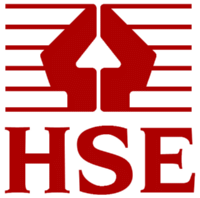

The Health and Safety Executive (HSE) have issued a Safety Notice regarding a risk of serious injury or death to workers using, or working near, wind turbine generator (WTG) service lifts.
Duty holders must ensure that control measures are in place to prevent workers from coming into contact with moving lift cars or parts. The target audience of the Safety Notice is:
Outline of the problem
A HSE investigation of an incident at a WTG found that the design of landing gates and guarding did not eliminate or reduce access to dangerous moving parts of the lift car as it operated with external one touch controls. It was possible to reach the lift car and become crushed or sheared against the gates.
Equipment must be supplied with adequate means of preventing contact with parts of machinery that could lead to injury. Inadequately guarded service lifts are likely to be considered by HSE to create a serious risk to users.
Given the risks involved from any retrofit programme on a WTG, it may not be appropriate to replace access gates and/or landing guards, but operators must access and adopt suitable hierarchical control measures.
Action required
Review control measures
Operators should immediately check that the necessary control measures are in place for all WTG service lifts. If the control measures are not in place, you need to withdraw the lift from use.
Those responsible for:
must ensure that:
Manage risk
As part of your risk management and control arrangements, you could consider:
Managing risk includes effective maintenance and inspection of equipment, you should:
New safety standard
The new British Standard, BS EN 81-44 'Safety rules for the construction and installation of lifts. Special lifts for the transport of persons and goods. Part 44 Lifting appliances in wind turbines', sets the benchmark for the safe design of service lists and associated safeguards.
Manufacturers of WTGs manufactured after the date of publication should refer to this standard when conformity assessing their WTG, as it establishes the "stat of the art" in relation to compliance with the essential health and safety requirements for this element of their machinery, as set out by the Supply of Machinery (Safety) Regulations SI 2008/1597.
BS EN 81-44 should improve the safety of new WTGs and set a benchmark standard for existing service lift installations to aim for where this is reasonably practicable.
Suppliers of WTGs should consider updating their operating instructions in relation to current risks associated with integrated service lifts not designed in line with BS EN 81-44. They should also work with users to improve the safety of their machines, where possible.
For more information on this subject, see: